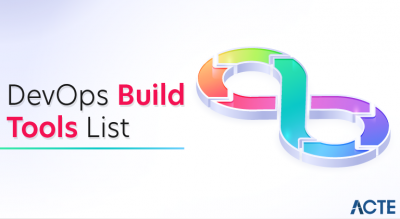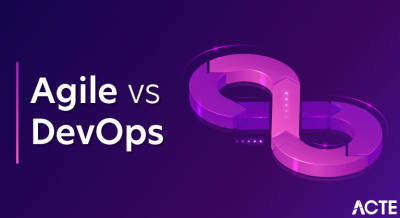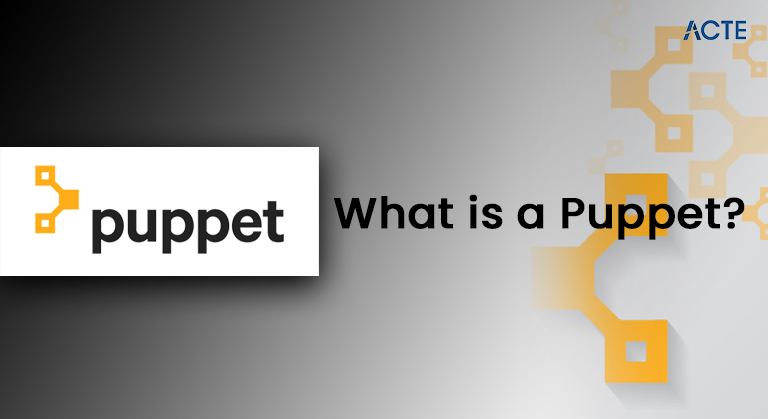
- Introduction to Puppet
- Why Puppet is Important for DevOps
- Key Features of Puppet
- How Puppet Works
- Puppet vs Other Configuration Management Tools
- Advantages of Using Puppet
- Common Use Cases of Puppet
- Conclusion
Introduction to Puppet
What is a Puppet? Puppet is a powerful open-source configuration management tool widely used in DevOps to automate infrastructure setup, configuration, and ongoing maintenance. It enables system administrators and DevOps teams to define infrastructure as code, ensuring consistent and repeatable system configurations across environments. By using Puppet, organizations can significantly reduce the risk of human error, speed up deployment times, and manage complex environments more efficiently. Puppet operates by allowing users to write declarative manifests that define the desired state of system resources, such as services, packages, and files – making it a key tool often covered in DevOps Training. These manifests are then applied automatically to target systems, ensuring they remain in the specified state. This approach supports both agent-based and agentless models, providing flexibility for various IT setups. Puppet is compatible with a wide range of operating systems, including Linux, Windows, and macOS, and supports the management of both on-premise and cloud-based infrastructures. It integrates well with popular DevOps tools and platforms, enhancing the automation and scalability of IT operations. Puppet’s robust ecosystem and active community contribute to its continued popularity in managing modern infrastructure efficiently.
Interested in Obtaining Your DevOps Certificate? View The DevOps Online Training Offered By ACTE Right Now!
Why Puppet is Important for DevOps
- Automation of Repetitive Tasks: Puppet automates the configuration of servers, saving time and reducing manual effort.
- Consistency Across Environments: Puppet ensures that configurations are uniform across different machines, reducing configuration drift.
- Version-Controlled Infrastructure: With Puppet, infrastructure is defined as code that can be versioned, tested, and reused like any other codebase a practice that complements tutorials such as How to Install Jenkins on Windows.
- Scalability: Puppet helps manage large-scale infrastructure and can handle thousands of servers simultaneously, making it ideal for large organizations or cloud-based environments.
- Improved Compliance and Auditing: Puppet maintains detailed logs and reports of changes made across systems, helping organizations meet compliance requirements and easily audit system states.
- Faster Deployment: With reusable modules and automation, Puppet enables faster provisioning and deployment of infrastructure and applications.
- Integration with DevOps Toolchains: Puppet integrates seamlessly with popular CI/CD, cloud, and monitoring tools, supporting end-to-end automation and streamlined DevOps workflows.
- Declarative Language: Puppet uses declarative language, meaning you define the final state of your infrastructure, and Puppet takes care of achieving that state. You don’t need to specify the steps involved.
- Idempotency: Puppet ensures that if a configuration has already been applied, no changes will be made unless necessary. This prevents unwanted changes and maintains system stability, making it a valuable addition to any DevOps Build Tools List.
- Cross-Platform Support: Puppet supports various platforms, including Linux, Windows, macOS, and Unix-like systems.
- Centralized Management: Puppet provides a centralized management system where you can manage multiple nodes (servers) from a single control point.
- Extensibility: Puppet supports custom modules and integrations, making it highly extensible and customizable to suit the needs of different environments.
- Consistency and Reliability: Puppet ensures that systems are always in the desired state, reducing configuration drift and manual errors.
- Faster Provisioning: Puppet automates the configuration process, enabling teams to quickly provision new servers and scale their infrastructure.
- Reduced Operational Overhead: With automated configurations, teams spend less time on manual interventions, troubleshooting, and resolving configuration-related issues.
- Compliance and Auditing: Puppet makes it easier to enforce compliance policies by providing detailed reports on the system’s state. This is especially useful for industries with strict regulatory requirements, and it helps answer the question What is Puppet.
- Improved Collaboration: As infrastructure is defined in code, DevOps teams and system administrators can collaborate more effectively on infrastructure management and configuration tasks.
- Reusability and Modularity: Puppet supports reusable modules, allowing teams to standardize configurations and apply them across multiple systems with minimal effort.
- Better Change Management: Puppet allows safe testing of configuration changes before deployment, reducing the risk of disruptions in production environments.
- Cross-Platform Support: Puppet works across various operating systems like Linux, Windows, and macOS, offering flexibility in managing diverse infrastructures.
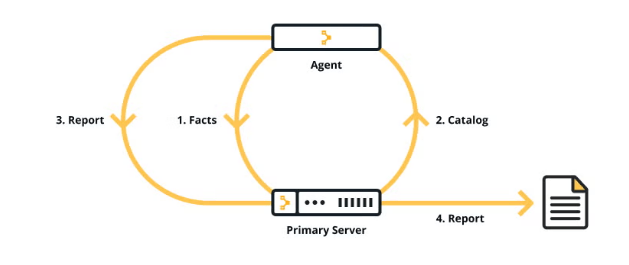
Key Features of Puppet
Puppet comes with a set of powerful features that make it an effective tool for managing infrastructure:
To Earn Your DevOps Certification, Gain Insights From Leading DevOps Experts And Advance Your Career With ACTE’s DevOps Online Training Today!
How Puppet Works
What is a Puppet? Puppet operates on a client-server architecture designed to manage and automate system configurations efficiently. At the core of this setup is the Puppet Master, a central server that stores configuration files known as manifests. These manifests define the desired state of system resources, such as packages, files, and services, across the infrastructure. The Puppet Master serves as the authoritative source of truth, ensuring all managed nodes maintain a consistent configuration, a concept frequently emphasized in DevOps Training. Each target system, referred to as a Puppet Agent, runs a lightweight client that communicates with the Puppet Master. The agent regularly initiates a Puppet run, during which it contacts the Puppet Master to request the latest configuration catalog.
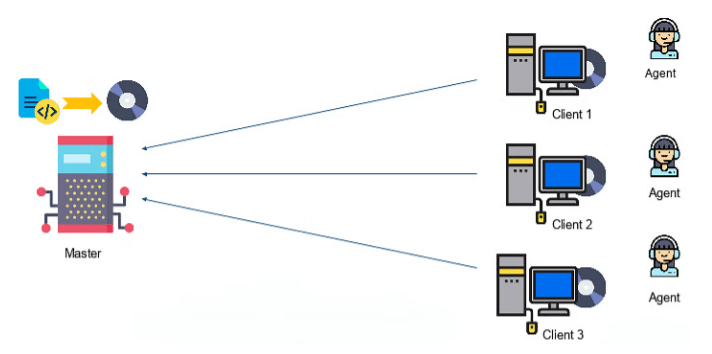
Once received, the agent evaluates the catalog and applies the necessary changes to bring the system into compliance with the defined state. After applying the changes, it reports the results back to the Puppet Master for logging and auditing. The use of manifests, written in Puppet’s domain-specific language (DSL), allows configurations to be expressed clearly and declaratively. This automated, repeatable process ensures infrastructure consistency, reduces manual errors, and simplifies large-scale system management.
Puppet vs Other Configuration Management Tools
There are several configuration management tools available in the DevOps ecosystem, and Puppet competes with other tools like Ansible, Chef, and SaltStack, which can be integrated with tools like Docker, helping answer the question What is Docker Container. Below is a comparison to highlight Puppet’s strengths and differences:
| Feature | Puppet | Ansible | Chef | SaltStack |
|---|---|---|---|---|
| Language | Declarative (DSL) | Declarative (YAML) | Imperative (Ruby) | Declarative (YAML or Python) |
| Agent-based | Yes | No | Yes | Yes |
| Ease of Use | Moderate | Easy | Moderate | Moderate |
| Extensibility | High (custom modules) | High (Playbooks, Ansible Roles) | High (custom recipes) | High |
| Community Support | Large | Large | Large | Growing |
Are You Considering Pursuing a DevOps Master’s Degree? Enroll For DevOps Masters Course Today!
Advantages of Using Puppet
Common Use Cases of Puppet
Puppet is a highly versatile tool that plays a crucial role in various stages of the DevOps pipeline. One of its primary use cases is Infrastructure as Code (IaC), where infrastructure is defined and managed through code, allowing teams to provision, scale, and maintain systems more efficiently. This approach ensures consistency and repeatability across environments. Configuration management is another core function of Puppet, helping organizations maintain uniform configurations across all systems by automatically applying the necessary software, settings, and updates. In the realm of Continuous Integration and Continuous Deployment (CI/CD), Puppet can automate the deployment of applications, ensuring they are consistently delivered across multiple environments without the need for manual intervention, a key consideration when exploring Ansible Vs Puppet. This streamlines the release process and reduces the risk of deployment errors. Puppet is also widely used for security and compliance automation, as it can enforce predefined security policies, manage patching, and ensure systems adhere to regulatory standards. Additionally, Puppet excels at environment management, enabling teams to define and apply environment-specific configurations for development, testing, and production. This flexibility helps maintain control and stability across the entire software delivery lifecycle.
Preparing for a DevOps Job Interview? Check Out Our Blog on DevOps Interview Questions & Answer
Conclusion
Puppet is a powerful and flexible tool in the DevOps toolchain, designed to simplify infrastructure management and automation. It enables teams to define system configurations as code using a declarative language, ensuring that infrastructure is consistently deployed and maintained across different environments. One of Puppet’s key strengths is its idempotency allowing repeated application of configuration without changing the system’s desired state making it reliable and predictable. Puppet supports a wide range of operating systems, including Linux, Windows, and macOS, and can manage both on-premise and cloud-based infrastructure. Its cross-platform capabilities, combined with a strong ecosystem and integration with other DevOps tools, make Puppet ideal for managing complex, heterogeneous environments a key topic often explored in DevOps Training. As modern infrastructures grow in complexity and scale, automation becomes essential. Puppet addresses this challenge by improving collaboration between development and operations teams, reducing manual errors, and streamlining configuration changes. Its scalability ensures it can handle both small projects and large enterprise systems efficiently.


